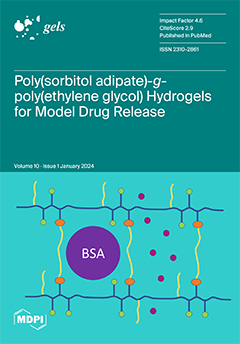The clinical management of wounds is known to be a significant challenge: not only does the dressing need to ensure and provide the appropriate barrier and healing characteristics, but consideration of patient compliance concerning comfort, functionality, and practicality also needs to be included.
[...] Read more.
The clinical management of wounds is known to be a significant challenge: not only does the dressing need to ensure and provide the appropriate barrier and healing characteristics, but consideration of patient compliance concerning comfort, functionality, and practicality also needs to be included. The poly(3-hydroxybutyrate-
co-4-hydroxubutyrate) (P(3HB-
co-4HB)) copolymer, isolated from
Cupriavidus malaysiensis USM1020 (
C. malaysiensis USM1020), was produced in the presence of excess carbon sources (1,4-butanediol and 1,6-hexanediol) using either a shake flask cultivation process or a bioreactor fermentation system. P(3HB-
co-4HB) is widely known to be biodegradable and highly biocompatible and contains a tuneable 4HB monomer molar fraction, which is known to affect the final physicochemical properties of the intracellular copolymer. In this paper, we describe not only the fabrication of the polymeric gel but also its optimised profiling using a range of physical and mechanical techniques, i.e., SEM, FTIR, DMA, DSC, and WCA. The further enhancement of the gel through additional functionalisation with sol-gel-derived bioactive glass and liquid-exfoliated graphene was also investigated. The biocompatibility and biological characterisation of the substrates was assessed using murine osteoblasts (MC3T3), human primary dermal fibroblasts (HDFs), human fibroblast (BJ) cells, and standard cell culture assays (i.e., metabolic activity, LDH release, and live/dead staining). In short, P(3HB-
co-4HB) was successfully isolated from the bacteria, with the defined physico-chemical profiles dependent on the culture substrate and culturing platform used. The additional enhancement of the copolymer with bioactive glass and/or graphene was also demonstrated by varying the combination loading of the materials, i.e., graphene resulted in an increase in tensile strength (~11 MPa) and the wettability increased following the incorporation of bioactive glass and 0.01 wt% graphene (WCA ~46.3°). No detrimental effects in terms of biocompatibility were noticed during the 7 days of culture in the primary and established cell lines. This study demonstrates the importance of optimising each of the individual components within the biocomposite and their relationship concerning the fine-tuning of the material’s properties, thus targeting and impacting the endpoint application.
Full article






